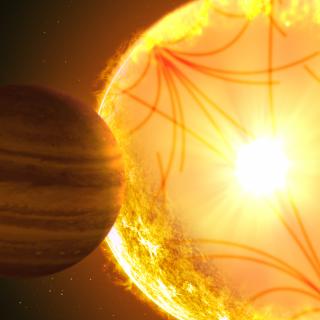Bibcode
Dencs, Z.; Derekas, A.; Mitnyan, T.; Andersen, M. F.; Cseh, B.; Grundahl, F.; Hegedűs, V.; Kovács, J.; Kriskovics, L.; Palle, P. L.; Pál, A.; Szigeti, L.; Mészáros, Sz.
Bibliographical reference
Publications of the Astronomical Society of the Pacific
Advertised on:
5
2024
Citations
0
Refereed citations
0
Description
Understanding the atmospheric parameters of stars on the top of the RGB is essential to reveal the chemical composition of the Milky Way, as they can be used to probe the farthest parts of our Galaxy. Our goal is to determine the chemical composition of 21 RGB stars with T eff < 4200 K selected from the APOGEE-2 DR17 database using new observations carried out with the spectrograph mounted on the 1 m telescope of the Hungarian Piszkéstető Observatory and the SONG spectrograph (R = 77,000) on the Hertzsprung SONG telescope in the 4500–5800 Å wavelength range. This is the first time the spectrograph (R = 18,000) on the 1 m telescope at Piszkéstető Observatory was used to measure the abundances of stars. We created a new LTE spectral library using MARCS model atmospheres and SYNSPEC by including the line list of 23 molecules to determine atmospheric parameters (T eff, $\mathrm{log}g$ , [Fe/H], [α/Fe]) and abundances of Si, Ca, Ti, V, Cr, Mn, and Ni with FERRE. The resulting parameters were compared to that of APOGEE. We found a good agreement in general, the average difference is ‑11.2 K in T eff, 0.11 dex in $\mathrm{log}g$ , 0.10 dex in [Fe/H], and ‑0.01 dex in [α/Fe]. Our analysis successfully demonstrates the ability of the spectrograph at Piszkéstető Observatory to reliably measure the abundance of bright stars.
Related projects

Helio and Astero-Seismology and Exoplanets Search
The principal objectives of this project are: 1) to study the structure and dynamics of the solar interior, 2) to extend this study to other stars, 3) to search for extrasolar planets using photometric methods (primarily by transits of their host stars) and their characterization (using radial velocity information) and 4) the study of the planetary
Savita
Mathur